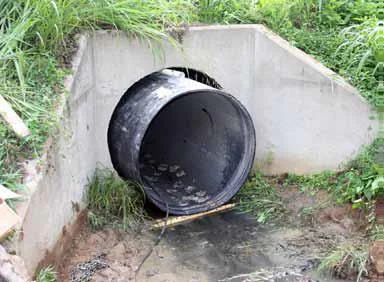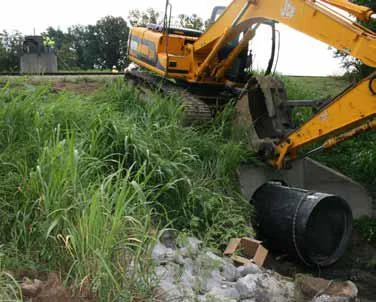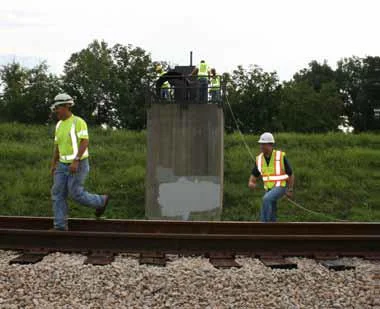Resources
Field Reports
Louisville Levee Culvert Relined with Snap-Tite



The Problem
A levee located in a park off of Cane Run Road in Louisville, Kentucky contained a deteriorated corrugated metal drainage pipe. During a video inspection, it was discovered that the 94-foot, 54-inch pipe was damaged and needed to be replaced or repaired. The Louisville Municipal Sewer District (MSD) is the sponsor of the levee, which was originally built by the United States Army Corps of Engineers (USACE). The USACE built many of these levees more than 40 years ago. Levee sponsors in the USACE program are required to maintain standards for levees, including drainage pipes.
In order to maintain status in the USACE levee program and its FEMA certification, MSD wanted to fully rehabilitate the pipe without affecting the structural integrity of the levee, all at a reasonable cost. Rehabilitating the pipe would protect against voids inside the levee and potential drainage issues, preventing any possible levee breach.
In addition, water was collecting in the levee’s gate house so MSD needed to increase the flow to eliminate any backup from heavy flow conditions.
The Solution
Josh Dickerson, project administrator engineer for MSD, spoke with Snap-Tite representatives Ryan Harrington and Stephen Boggess about a potential solution for the levee repair. Snap-Tite offered a solution that was flexible enough to install inside the culvert and levee gate, and also increase the flow to prevent backup during heavy flow conditions.
Snap-Tite is made of high-density polyethylene (HDPE) pipe and has a unique patented male/female machining at each end of the pipe sections. The machined sections are ‘snapped’ together, piece-by-piece, and pushed into the full length of an existing pipe. Any annular space and voids between the old culvert and new liner are filled in with grout. The pipe liner is available in lengths from two feet to 50 feet, and is available for culverts with diameters from eight inches to 84 inches. Snap-Tite also meets American Association of State Highway and Transportation Officials (AASHTO) Standard M326 for rehabilitating culverts.
“We needed to use a pipe that can bend because of the tight conditions within the culvert and gate house,” said Dickerson. “We liked the solid connection of the joints Snap-Tite offered as well as the flexibility we get with HDPE pipe. Other pipes, such as HOBAS pipes, were too rigid for this application. We also chose this pipe because we used it before and wewanted to use a product we could get it in correctly.”
Snap-Tite also offers a product called the Hydro-Bell. Independent testing conducted by Utah State University found that the Hydro-Bell increases hydraulic flow by approximately 30 percent, compared to plain end headwalls under inlet control conditions typically found in culvert applications. The Hydro-Bell is designed to attach to a Snap-Tite pipe end.
MSD hired Temple & Temple Contractors to install 96 feet of 48-inch Snap-Tite pipe, along with a Hydro-Bell, also supplied by Snap-Tite, to help increase flow.
Dickerson added, “Snap-Tite pipe was also a less expensive option compared to a dig and replace method, especially since the culvert also runs under a railroad track.”
The Installation
Temple & Temple was able to install the new culvert liner and Hydro-Bell in two days. First, Temple & Temple slid one section of the 48-inch Snap-Tite pipe liner into the old levee culvert. Then they snapped the ends of the Snap-Tite pipe sections together using come-a-longs and chains and pushed the rest of the pipe liner into the culvert until it was fully lined. Neither the levee nor the railroad that ran above the culvert were disturbed during this process.
The Hydro-Bell was then lowered into an opening on top of the gate house, and down into it, in order to attach it to the Snap-Tite pipe liner already installed inside the old culvert. The Hydro-Bell was extrusion welded onto the Snap-Tite pipe inside the gate house.
Finally, any annular space between the old culvert and new Snap-Tite pipe liner was filled in with grout. The installation was a success and MSD was happy with the material.


